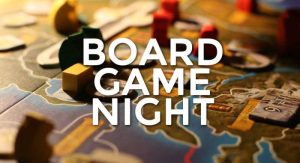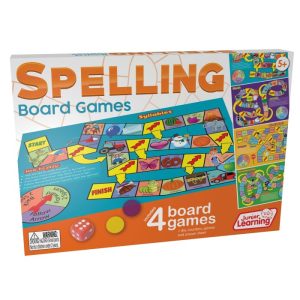
New Board Games Releases sets the stage for this enthralling narrative, offering readers a glimpse into a story that is rich in detail with simple but touching style and brimming with originality from the outset.
As we delve into the recent trends in the board game industry, uncover popular themes in new releases, and explore the impact of technology on modern designs, a world of creativity and innovation unfolds before us.
New Board Games Releases

In recent years, the board game industry has been experiencing a renaissance, with a surge in popularity among players of all ages. This resurgence can be attributed to the creativity and innovation seen in new board game releases, as well as the growing interest in tabletop gaming as a social activity.
Recent Trends in the Board Game Industry
One of the recent trends in the board game industry is the rise of cooperative gameplay. Instead of competing against each other, players work together towards a common goal, fostering teamwork and collaboration. This trend has been well-received by many players looking for a more inclusive and less cutthroat gaming experience.
- Increased focus on storytelling: Many new board games incorporate rich narratives and immersive themes, adding depth and complexity to the gameplay.
- Integration of technology: Modern board games often integrate technology, such as apps or digital components, to enhance gameplay and provide unique experiences.
- Emphasis on sustainability: Board game publishers are increasingly prioritizing environmentally friendly production practices, such as using recycled materials and eco-friendly packaging.
Popular Themes in New Board Game Releases
Themes play a crucial role in shaping the player experience and attracting interest in new board games. Some popular themes that have been trending in recent releases include:
- Fantasy worlds: Games set in fantastical realms with magical creatures and epic quests continue to be a staple in the board game market.
- Historical settings: Many board games draw inspiration from history, allowing players to immerse themselves in different time periods and cultures.
- Sci-fi adventures: Science fiction-themed board games offer futuristic settings, advanced technology, and thrilling space exploration narratives.
Impact of Technology on Modern Board Game Designs
Technology has significantly influenced the design and gameplay of modern board games, leading to innovative mechanics and interactive experiences. Some key ways in which technology has impacted board game designs include:
- Enhanced components: Digital elements like companion apps or augmented reality features can enhance gameplay by providing dynamic content and interactive challenges.
- Accessibility: Technology has made board games more accessible to a wider audience, allowing players to learn rules and mechanics more easily through digital tutorials and assistance.
- Customization: Digital integration enables board games to offer personalized experiences, such as variable player powers, adaptive difficulty levels, and dynamic storytelling.
Board Game Mechanics
Board game mechanics refer to the rules and systems that govern how players interact with the game and make decisions. These mechanics determine the overall gameplay experience, including strategy, player interaction, and the overall flow of the game.
Types of Game Mechanics
There are various types of game mechanics used in popular board games, each offering a unique gameplay experience. Some of the common types include:
- Roll and Move: Players roll dice to determine how far they can move their pieces on the board.
- Worker Placement: Players assign their limited workers to different actions or locations to gain resources or points.
- Deck Building: Players start with a basic deck of cards and acquire new cards to build a more powerful deck throughout the game.
- Tile Placement: Players strategically place tiles to build a board or map, influencing gameplay and scoring.
Innovative Game Mechanics
Recent board game releases have introduced innovative game mechanics that push the boundaries of traditional gameplay. These new mechanics offer fresh and engaging experiences for players. Some examples of innovative game mechanics include:
- Legacy Games: Games that evolve and change over multiple play sessions, with decisions made in one game affecting future games.
- Variable Player Powers: Each player has unique abilities or powers that shape their strategy and interactions with the game.
- Real-Time Gameplay: Players must make decisions and take actions quickly within a limited time frame, adding a sense of urgency and excitement.
Design and Artwork
Artwork and design play a crucial role in the overall gaming experience of board games. They not only enhance the aesthetics of the game but also contribute to immersing players into the game world, setting the tone, and creating a memorable experience.
Importance of Artwork and Design
Artwork and design are essential components of board games as they serve as the visual representation of the game’s theme, story, and mechanics. High-quality illustrations and well-thought-out design elements can captivate players, draw them into the game’s world, and enhance their overall gaming experience.
- Artwork and design help in creating a cohesive and engaging game world that resonates with the theme and story of the game.
- High-quality components and visually appealing artwork can attract players and make the game stand out on store shelves.
- Well-designed game boards, cards, tokens, and other components not only look good but also improve the readability and usability of the game.
- Artwork and design can evoke emotions, set the mood, and enhance the storytelling aspect of the game, making it more immersive for players.
Different Art Styles in Board Game Illustrations
Board games often feature a variety of art styles, each contributing to the overall aesthetic and feel of the game. Some common art styles used in board game illustrations include:
- Cartoonish: This playful and whimsical art style is often seen in family-friendly and light-hearted games, adding a fun element to the gameplay.
- Realistic: Realistic art styles aim to create lifelike representations of characters, settings, and objects, immersing players in a more serious or detailed game world.
- Minimalistic: Minimalistic art styles focus on simplicity and clean design, using basic shapes, colors, and lines to convey information and create a modern look.
- Fantasy: Fantasy art styles often feature mythical creatures, magical landscapes, and otherworldly elements, transporting players to fantastical realms and enhancing the sense of adventure.
Gameplay Experience
Board games offer a unique gameplay experience that can bring players together and create lasting memories. The engaging nature of board games lies in the player interaction, strategy, and overall experience of the game.
Player Interaction and Strategy
Player interaction is a key element in board game design, as it enhances the overall gameplay experience. Whether it’s through cooperation, competition, or negotiation, player interaction keeps the game dynamic and exciting. Players must strategize and adapt to the actions of their opponents, adding layers of complexity and depth to the gameplay.Some board games that excel in player interaction and strategy include:
“Settlers of Catan”
Players must strategically collect and trade resources to build settlements and cities, while also negotiating with other players to secure valuable trade deals.
“Ticket to Ride”
Players compete to build railway routes across the map, strategically blocking their opponents and completing their own routes while managing limited resources.
“Pandemic”
A cooperative game where players work together to stop the spread of diseases around the world, requiring strategic planning and coordination to achieve victory.These board games offer unique gameplay experiences that challenge players to think critically, strategize effectively, and interact with each other in meaningful ways.
Closure

From the allure of intricate artwork to the thrill of engaging gameplay experiences, New Board Games Releases opens up a world of possibilities for enthusiasts and newcomers alike. Dive into this realm of imagination and strategy, where every roll of the dice holds the promise of adventure.
General Inquiries
What are some popular themes in new board game releases?
Common themes include fantasy, sci-fi, mystery, and historical settings, each offering a unique gameplay experience for players.
How does artwork enhance the gaming experience in board games?
Artwork in board games not only adds visual appeal but also helps in immersing players into the game’s theme, creating a more engaging and memorable experience.
What role does player interaction play in board game design?
Player interaction is crucial in creating dynamic gameplay experiences, fostering competition, cooperation, and strategic decision-making among players.





